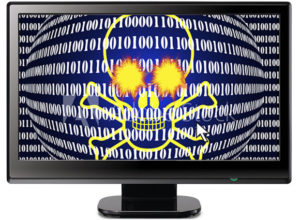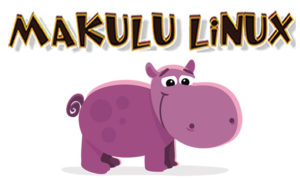Jacque Montague Raymer, developer and creator of the MakuluLinux family of distributions, on August 24 released a new distro that is inspired by a project he shelved several years ago.
MakuluLinux Shift is a well-designed Linux distro that blends several mainstream design concepts with performance features not found elsewhere. One of Shift’s unique traits is its ability to modify key design elements effortlessly. Hence, its name.
A few other Linux distros have mechanisms to alter the look and feel of the desktop, and even swap out desktop components without logging out and back into a computing session, but they work less ideally.
Shift also minimizes the focus on choosing one complete desktop over another. Raymer built in many of the functions of the most popular desktops, so shifting customizations and themes along with in-house configuration tools give users a unique and familiar desktop environment.

MakuluLinux Shift could very well be an ideal Linux computing platform with what comes close to being desktop agnostic. That says a lot for a Linux distribution.
As Raymer described in exchanges with testers early on, Shift is essentially a modified GNOME build with a more traditional bottom panel, with bright colors and custom graphical user interfaces (GUIs) that drive some portions of the OS.
It is less of any one desktop and more of a lot of popular desktop designs. You will sense a mixture of elements from GNOME, Cinnamon, Xfce, and splashes of several others. So unless you are a desktop purist not open to any adulteration, you will find plenty of styles, features, and configuration tweaks to make it your own new comfort zone.

Shift comes in several varieties that all include hybrid code bases. One is adapted from Ubuntu 20.04 repositories. Another is built on MakuluLinux’s Debian base. Both are partial rolling releases that update without requiring reinstallations.
A Family of Restarts
MakuluLinux debuted in 2013 with a different approach to implementing Linux OS features. The last few years have brought considerable change and new development to this Linux family.
Now based in Vietnam, the developer first debuted the infant distro from his previous location in Africa. Hence the distro’s name reflects the African continent.
“Makulu” is the word for “big chief” in the Zulu language. Spend a little time with the MakuluLinux 2020 family releases to discover how very appropriate the name is in branding this distro.
Earlier versions of MakuluLinux offered a choice of Xfce, KDE, and Enlightenment 17 desktops. Rebuilt from the ground up in 2015, Raymer re-engineered his distros into three different editions. Earlier this year, the developer did another round of rip, replace, and rebuild.
LinDoz features an in-house modification of the Cinnamon desktop. Flash runs an in-house modified version of the Xfce environment. Core, which introduced some radical changes, uses a highly customized desktop forked from Xfce and Cinnamon, with elements of GNOME.
Raymer then decided to add Shift. This fourth member of the MakuluLinux family is all of these and then some. Shift was a much earlier project that stalled. The pandemic made it the right time to release it again.
A Pandemic Project of Sorts
COVID-19 forced Raymer into around-the-clock development at home. Along with his ongoing distro renewal projects, he turned his attention to a long-dormant distro he had shelved.
“I had really high hopes for Shift. It’s been on the back burner too long. It is something I very much looked forward to finishing,” he said.
As a software developer, he constantly starts new projects and revives old ones. He has a few that he keeps on the back burner for various reasons that include design or code problems, timing, etc.
Raymer originally set aside the original Shift distro when GNOME was going through some major development changes with release updates that would break half the extensions and shell themes along with random other items. So he switched to Cinnamon as a framework. But that lacked the intended effect. With GNOME all fixed, the timing seemed right to resurrect Shift.
Unwrapping Shift Linux
Shift is loaded with innovations and mashups that make this new distro in a class of its own. It has a variety of choices in the right-click menu on the desktop, including sharing options. You can also access options to search files and view folder content from the right-click menu.
You will also see some tweaks to the main menu. Plus, you can access display settings straight from the desktop by right-clicking. You can also access Themes from the same right-click menu.

The new dock bar layout comes with a few surprises. You can switch between a bottom panel and a dock easily with a click of a button and switch back again. It changes instantly and works well.
Check out CoreCtrl in the main menu to view and manage CPU/GPU on your system. Currently, it fully supports AMD/ATI and also some support for Intel. Support for Nvidia is coming soon.

Shift is very flexible. It comes in two lite builds — for Ubuntu 20.04 and Debian Testing Branch. Both come with minimal applications pre-installed. A full version based on Ubuntu 20.04 has much more popular software preinstalled.
The full version also fully supports Wine out of the box, as well as all the other regular software packages preinstalled in the other current MakuluLinux editions. All of the releases have updated GNOME packages as well as custom MakuluLinux extensions and scripts.
A touch build is also available. This release is geared more toward tablet PCs and touch screen computers. You can also run it without trouble on non-touch screens, laptops and desktops.
Bottom Line
MakuluLinux Shift is an interesting Linux distro that takes some of the best features of popular desktop environments and rolls them together into one computing platform. It doesn’t pit productivity against simplicity. It offers choices of minimal software or full application.
Shift Linux is easy to use. Yet it has enough bells and whistles to satisfy power users.
The one area that left me wanting more was the background images. They all are colorful and abstract. Rather than make users add their own image arrays, I would like to see the developer add some of the scenic collections used in the other MakuluLinux distros. The classy image display tool for picking background images seems wasted with such a minimal selection.
If you want to get a closeup sampling of Shift Linux in action, view this Youtube presentation Raymer made.
Want to Suggest a Review?
Is there a Linux software application or distro you’d like to suggest for review? Something you love or would like to get to know?
Pleaseemail your ideas to me, and I’ll consider them for a future Linux Picks and Pans column.
And use the Reader Comments feature below to provide your input!

























































